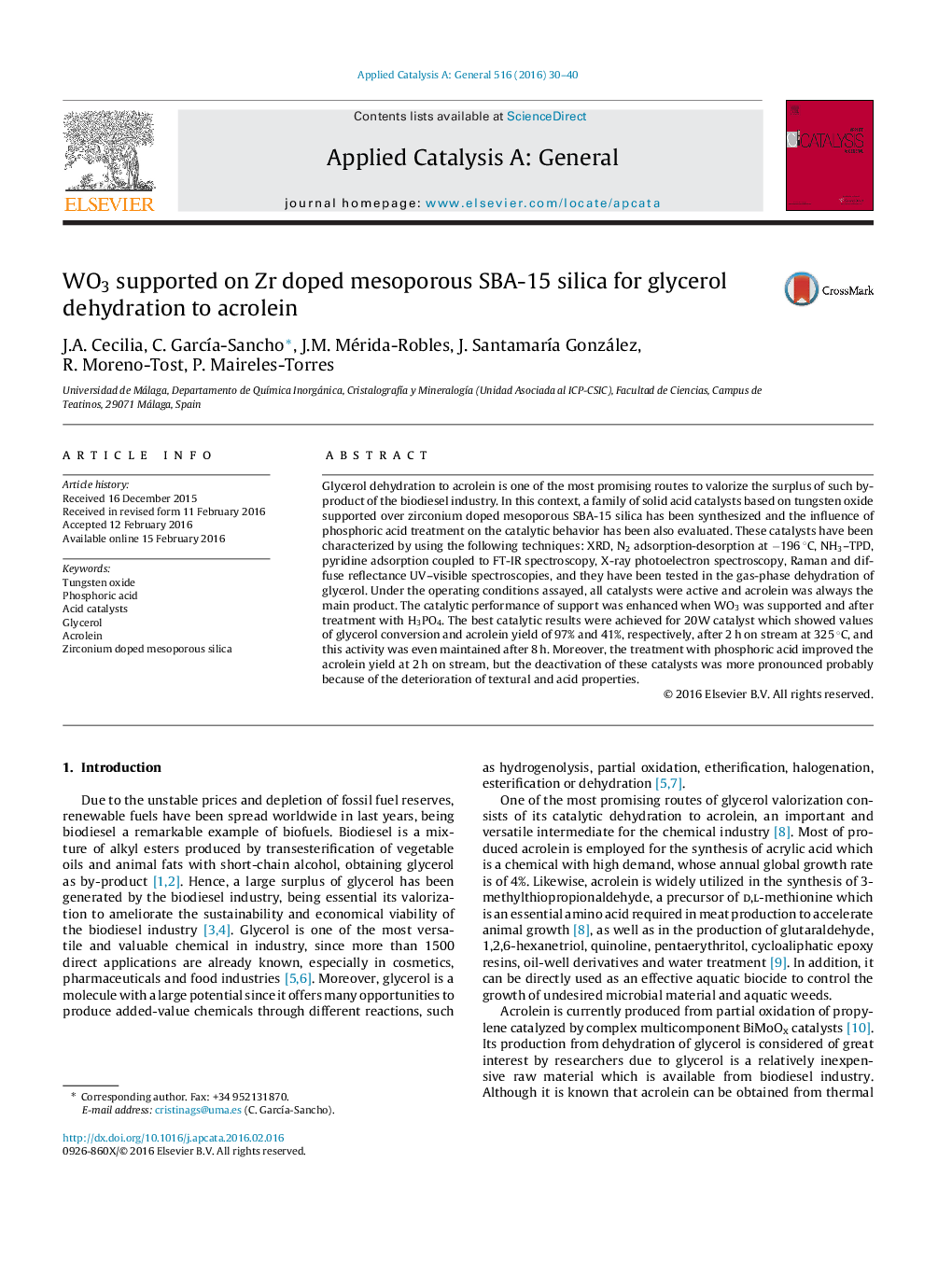| Article ID | Journal | Published Year | Pages | File Type |
|---|---|---|---|---|
| 38823 | Applied Catalysis A: General | 2016 | 11 Pages |
•WO3 supported over Zr-SBA-15 catalysts are active in dehydration of glycerol, being always acrolein the main product which is considered as a versatile intermediate for the chemical industry.•WO3 enhances the total acidity and the Brönsted acid sites ratio of support, consequently improving the activity and stability of catalysts in glycerol dehydration to acrolein.•Glycerol conversion and acrolein yield are maintained after 8 h for W catalysts, attaining the highest values for a WO3 loading of 20 wt% which may be related to WO3-ZrO2 phases on catalyst surface.•Although the H3PO4 treatment enhances acrolein yield for short reaction times, high amounts of acid damage the textural and acidic properties of W catalysts, decreasing the available acid sites.
Glycerol dehydration to acrolein is one of the most promising routes to valorize the surplus of such by-product of the biodiesel industry. In this context, a family of solid acid catalysts based on tungsten oxide supported over zirconium doped mesoporous SBA-15 silica has been synthesized and the influence of phosphoric acid treatment on the catalytic behavior has been also evaluated. These catalysts have been characterized by using the following techniques: XRD, N2 adsorption-desorption at −196 °C, NH3–TPD, pyridine adsorption coupled to FT-IR spectroscopy, X-ray photoelectron spectroscopy, Raman and diffuse reflectance UV–visible spectroscopies, and they have been tested in the gas-phase dehydration of glycerol. Under the operating conditions assayed, all catalysts were active and acrolein was always the main product. The catalytic performance of support was enhanced when WO3 was supported and after treatment with H3PO4. The best catalytic results were achieved for 20W catalyst which showed values of glycerol conversion and acrolein yield of 97% and 41%, respectively, after 2 h on stream at 325 °C, and this activity was even maintained after 8 h. Moreover, the treatment with phosphoric acid improved the acrolein yield at 2 h on stream, but the deactivation of these catalysts was more pronounced probably because of the deterioration of textural and acid properties.
Graphical abstractFigure optionsDownload full-size imageDownload high-quality image (111 K)Download as PowerPoint slide
